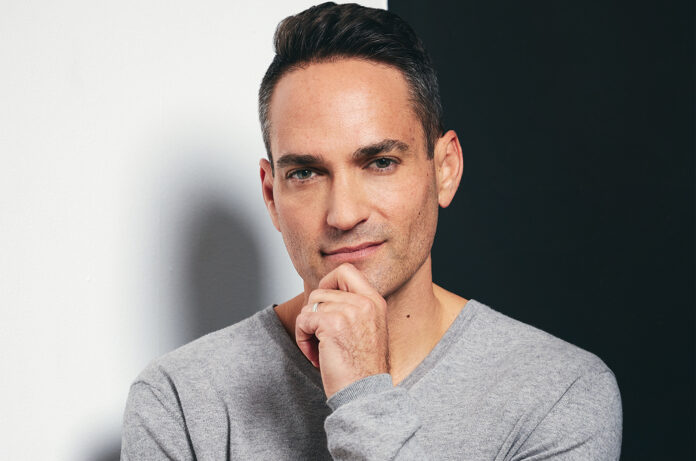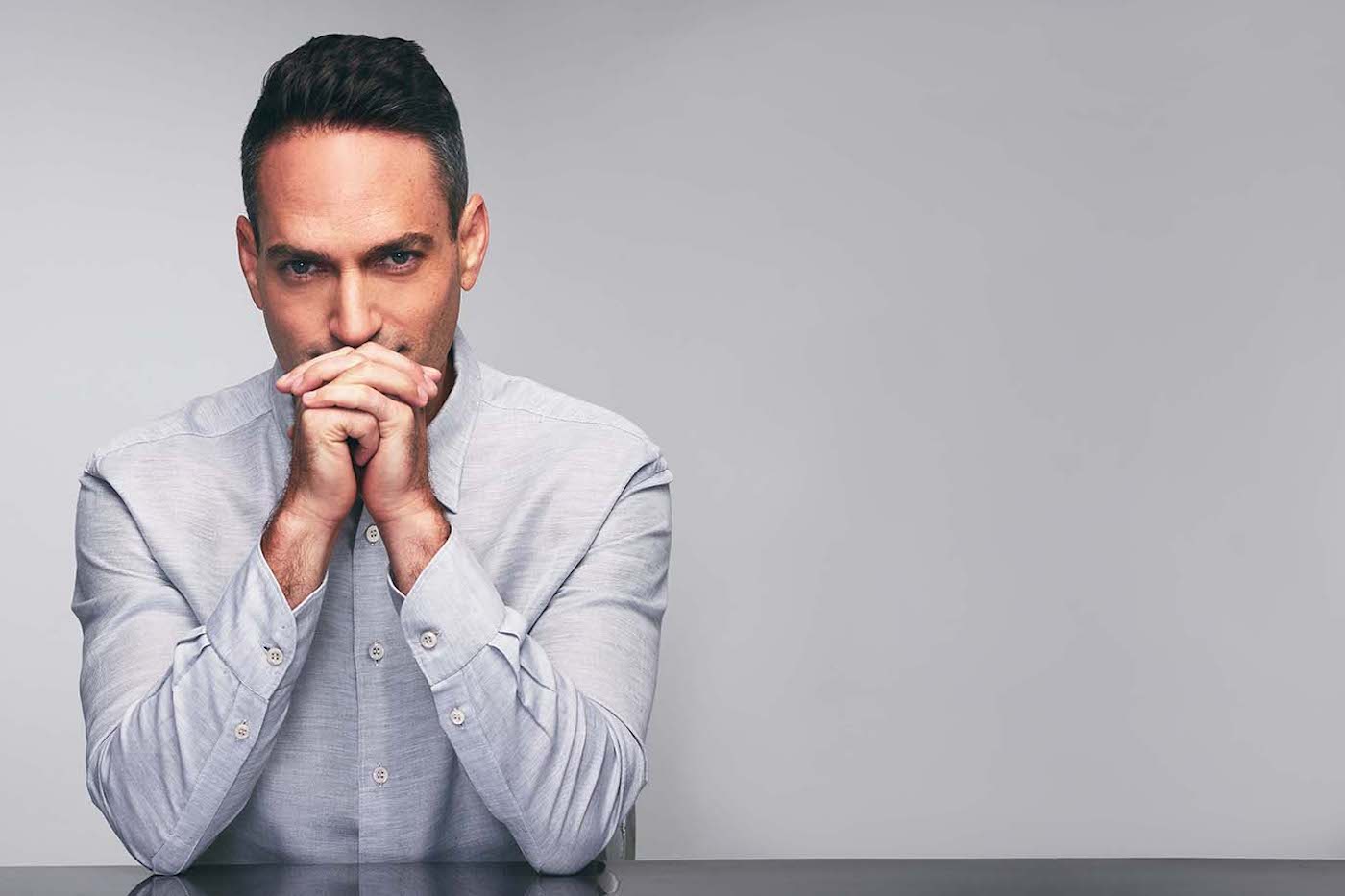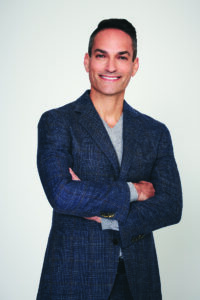
When Adam Bierman started his journey in the cannabis industry in 2008, he was a California kid with a brash personality and ambitions to destigmatize the plant and promote its benefits, both medicinal and recreational. By the time he co-founded MedMen with Andrew Modlin just two years later, the pair had created a business pitch impressive enough to land Bierman at the helm of what would become the most high-profile—and most controversial—cannabis company in the United States.
Bierman is blessed with abundant self-confidence and undeniable charisma that tends toward audaciousness. Both traits helped propel MedMen not only with suppliers, partners, and the financial markets, but also with mainstream media. At the same time, old-school activists and legacy operators saw him as just another newbie—and a very young one, at that—climbing into the green rush to exploit the plant for profit. Nevertheless, MedMen’s rise was nothing short of spectacular, owing in large part to a new type of in-store experience that earned the company the nickname “Apple Store of weed.”
As Beirman and Modlin raised millions of dollars in investment, MedMen became one of the fastest-growing national retail chains in the U.S., with dozens of locations across the country. At its peak, the company was valued at $2 billion. When MedMen went public on the Canadian Securities Exchange in 2018, its stock quickly shot up to $6.50 per share. However, as rumors spread about exorbitant cash burn and questionable business practices, the stock started a steady slide. By January 2020, shares were trading at fifty cents. Today, with a market cap of only $25 million, the company is worth just pennies a share.
In 2020, Bierman stepped down as chief executive officer amid allegations of financial improprieties, mismanagement of funds, and a TMZ-worthy lawsuit filed by the company’s former chief financial officer. MedMen came out on top in that court battle the next year, but by then Bierman also had filed suit against the company, alleging fraud and failure to honor the terms of his separation agreement. In December 2022, an arbitrator ordered the company he co-founded to pay him $3.1 million in reparations—a fraction of what he sought, but enough to leave him feeling vindicated.
After his departure from MedMen, Bierman took a hiatus from the industry to spend quality time with his family at their home in Costa Rica. Of late, he has been working on a book and gearing up for his return to an industry still burdened with many of the same challenges he confronted a decade ago.
“I think it’s important to know that I didn’t really leave the space for that long. My process took about a year, year and a half,” he said. “And that was the longest I could hold out on moving forward with some of the people who believed in me before I believed in myself again. I’m more passionate today than when MedMen was the tip of the spear and [I was] a spokesperson for the industry.
“I’m excited about publicly reemerging, because I can tell the story,” he continued. “I was never interviewed as Adam Bierman before. I was always interviewed as the CEO of MedMen.”
Bierman and his backers recently debuted what he calls an entirely new retail concept: Megabud, a chain of “cannabis convenience stores.” With two shops open in the San Francisco Bay Area and several more there and in southern California “coming soon,” Bierman aims to transform the shopping experience and give both new and legacy consumers a reason to become loyal customers. He also has taken the role of “chief experience officer” for a new lifestyle brand, Bombotta, which is “delivering the latest and greatest from the world of exotics and putting it in a package with a transparent label of the exact genetics inside, then charging mid-tier pricing,” he said.
The time is ripe for innovation, especially in California, he believes. In his opinion, too many companies are resting on their laurels, hesitant to introduce new ideas or rock the boat in a market where most companies still struggle to turn a profit seven years after adult-use legalization.
MedMen’s meteoric rise and fall is the most well-documented story in the modern U.S. industry, complete with allegations of malfeasance, betrayal, and reckless behavior that led to the meltdown of one of the most highly valued cannabis companies in the U.S. Bierman was front and center in that story, and if he has regrets about his first shot at building an empire, he keeps them to himself. As he readily points out, MedMen was something of an object lesson in early-stage startups and the inevitable hazards of being a first-mover paving the way in a precarious new industry.
Whether he has learned enough lessons from his experience to build successful new ventures is an open question. One thing is indisputably clear: He hasn’t lost any of the confidence or bravado that brought him to the industry in the first place.

MedMen experienced a dramatic rise and fall between 2017 and 2019. What do you think were the most significant factors that led to its collapse?
I certainly don’t want to respond to that question and play the victim or make excuses, but I can certainly share the facts of what happened, and I want to talk about the MedMen journey. In fact, I’ve spent the past eighteen months working on the book, and we would need ten hours just to start chapter one. But with the truth, we can focus on all the lessons and how they hopefully translate to the industry today.
I can think of three things that went wrong leading up to my departure. In that timeframe, the first thing that happened was the Gotham Green debt, and the second thing was the Bill Barr [Department of Justice] interference in the PharmaCann transaction. The third thing was that the capital markets froze. Those three things, within twelve months, were the backdrop for everything else happening with the dynamic of the company.
[In 2019, MedMen obligated itself for up to $285 million in convertible debt and warrants held by Gotham Green Partners (GGP). The arrangement could have left GGP owning 66–78 percent of the company, to the detriment of original investors. At about the same time, MedMen and Pharmacann mutually agreed to abandon the former’s planned $682-million all-stock acquisition of the vertically integrated multistate operator for reasons neither ever fully explained. —Ed.]
When you look back at that period, I imagine there was plenty of blame to go around. Which parts of that downward spiral would you personally take ownership of, if any?
I would take full accountability for the reality that I did not have the experience to draw from in reacting to or handling any one of those three items. At that point in time, I was the CEO of a public company that had had the benefit of being the first company out in a booming, brand-new, exciting, fast-growing industry. My only experience as a public-company CEO was that of a company operating within the context of a booming capital market. The first time those capital markets froze during my tenure, I had never had the experience handling, reacting to, or even predicting that situation. That lack of experience is most certainly something I’m accountable and responsible for.
Over a ten-year span at MedMen, more things went right than wrong as we played our role in creating permanence for the industry while also building a dynamic public company that started out of my apartment and still provides legal cannabis to consumers across the country today. At a certain point in time, and in history, we were the tip of the spear. We gained all the experiences—good and bad—that come as a result of being in that position.
When you look at my tenure at MedMen, it’s unique but it’s not. It’s unique except for in certain industries like casino gaming. And when you look at how I was making those decisions, there was no experience available. This had never been done before. There weren’t any books to draw from.

Looking back, is there anything you would have done differently if you had the chance?
At MedMen, we made 100 decisions a day, and if I got fifty-one of them right, that’s like a high five. There’s nothing perfect, especially when there is no history to draw from. So if I had a time machine and all the information I have today, of course I would have built everything differently, because I would have had a whole different set of facts from which to build. But I built MedMen from passion, and there is a necessity in this industry for passion, because passion leads to plans. But plans mean charting a journey, and sometimes journeys take us through and to places we’ve never been before.
My passion was for the fact that marijuana should be destigmatized, accessible, and regulated. That led to us creating MedMen. That led to us changing state laws and helping to create a whole new group of lawmakers who talk about marijuana when they’re campaigning for office. The passion that led to all those things unlocked an opportunity. As I look back, I never would have changed how much passion I had at the beginning. And I certainly have more passion today than I did fifteen years ago.
Do you expect investors and industry leaders to see you as someone who learned from his mistakes and now knows better, or do you think you will feel heat about MedMen’s failures?
My first reaction is to say MedMen is not a failure. My work and my time for more than ten years was the opposite of failure. MedMen and its stock price currently are super depressed, so if I had invested in it a year and a half ago, it would feel like it’s currently a failure. But the real question is twenty years from now, what will MedMen’s place in all of this be? With some of the most strategic retail assets in the United States—the most important marijuana market on planet Earth—I believe MedMen will be a part of the future of cannabis in one way or another.
Unfortunately, my departure from MedMen wasn’t exactly roses. As a result, it’s been a couple of years where there has been litigation, and there has been stuff floating back and forth, the corporate drama that happens when something goes down like that. So I’ve been quiet, but it’s over now, and I prevailed. I think there are lessons and experiences, but I’ve been flattered and humbled over the past couple of years. It’s a very humbling experience to leave a company you built with every ounce of your being. So after that, I definitely took time to regroup, think, and check in with myself and my family.
The investor side of the world today is not the same as it was in 2015 and 2018. If an investor is going to invest in something, they want to see a clear path to returns, and they don’t want to see a path to creating returns with a bunch of if/then statements.
So, even with its current difficulties, you think MedMen will survive.
I’m no longer there, so it’s difficult for me to know what’s going on behind the scenes. A lot of companies are struggling, and the ones that survive are the ones that will be around for the long haul, whether they’re independent or part of some larger conglomerate. I just know those that will survive are going to have to wake up at some point very, very soon. They’re going to have to snap out of it. They’re going to have to innovate and create, move and shake, or they’re going to die.
Now that you are getting back into the industry, what projects and other pursuits have your attention?

As it pertains to actual commercial interests, I’m passionate about brands, I’m passionate about retail, and I am as passionate as I’ve ever been about California. So my focus professionally right now is those three categories. I have been helping California brands plan to scale, not only across the country but internationally, and helping brands outside California figure out how to create a business model that will sustain retail specific to California but also be applicable to the industry at large.
The way you would look at me right now is as an advocate, activist, and investor-operator. Every day I’m passionately thinking about how to participate and ensure the end of prohibition. When it comes to retail concepts, I have a concept called Megabud. There are two stores open in northern California, in San Francisco and Daly City, and those are a proof of concept for me. We have a system we call a “convenience-store model,” where we have evolved the MedMen playbook and figured out the best way to deliver customers an experience where they’re curious but might already know what products they want. How do we deliver investors while at the same time creating a business that is standalone, sustainable, and exciting in and of itself? Where they end up down the road, I don’t know, but those are stores I own and control.
Is there anything in particular about Megabud you think is distinctly different from other dispensaries?
It’s not different. It’s like another world—the next evolution of things. The way the store is operated from a business standpoint is fundamentally different from what has existed in the past, and the store is operated backward from our target KPIs [key performance indicators] to the shelf and to the floor. So as opposed to “this is what we think we need for staffing, and these are the products we think the community wants us to carry,” the staffing is aligned with a KPI or against a KPI. So when we know how much revenue that store does every day, it’s automatically staffed exactly to that revenue, which allows it to make money and also produces zero waste.
These are smaller-footprint stores that are built to flow differently. The way we’ve laid out these footprints allows people to move very easily and allows us to deal with them much more efficiently. From a business standpoint, I think the KPIs are going to be something people aren’t used to seeing at a California store. But it’s also about continuing to prove to people that, with passion, you can create plans and do things nobody has seen before.
I think the Megabud concept and me having these numbers and the customers being able to have that experience helps move retail forward. Ultimately, if retail can inspire the industry to move forward, it’s not just retail. Everybody has to wake up, right? Where’s the iteration on the brands? Where’s the iteration on consistently delivering these brands and building for the long term in a real, permanent way? Where’s the creativity bridging mainstream business to marijuana?
In which other segments of the market do you see the most opportunity? What other areas are you looking into?
The biggest opportunity right now, whoever you happen to be, is to have an edge. If you’re an investor, which means you have access to capital, that’s an edge. Whether you have an edge because you’re an operator and you’re the best cultivator in your entire state or your edge happens to be fifteen years of experience doing this and building a playbook—whatever your edge is, I think that is the opportunity today.
There are two arbitrage opportunities at the same time that are in force here. The first arbitrage is just between marijuana being an illegal and legal business. If you believe there is an ultimate end to prohibition and these businesses will be legal at some point, then they’re undervalued today. But the second opportunity today didn’t exist when I left MedMen: When everybody else is sitting on their hands, if the business itself is worth something, the opportunity is so, so much greater for those who are stepping up and grinding during those times versus the times when everybody’s stepping up.
The second opportunity for getting involved and getting disproportionate potential, or upside, whatever you want to call it, is if you believe in retail in your state, you’re a great operator or cultivator, and you’re willing to look at the experience of the past ten years—not just MedMen, but all of these companies—and start your foundation from a playbook that now exists. I am here to take it to where it is next. There are so few people doing that, especially with any passion. It doesn’t matter what part of the supply chain you’re in. There’s this tremendous opportunity.
Do you see any big shifts in the industry on the horizon?

Yes, I do see a lot of opportunities for the retail experience to evolve, particularly the concept of cannabis retail. I don’t look at things like consumption lounges as evolution. I think it’s great, but it’s not evolutionary. I still have yet to see any outline or any actual financials that make any sense, where it’s an interesting business model. So I look at evolution and I think about things like how it’s getting delivered to your door. What kind of loyalty are you a part of? How does that loyalty cross over to other parts of your life? How are you buying cannabis alongside other things? How are you purchasing your cannabis through other vendors? How are cannabis companies partnering with those organizations or places where people stay—for example, the hotels—or entertainment venues? I look at the evolution of the way people access cannabis, call it retail, but I’m thinking outside of the store.
I do think there’s a place for cannabis stores in the future, but I also think most of them will resemble more of what we’re doing at Megabud than what we did in West Hollywood—or even some of these megastores that exist today.
So, what do operators need to do to shake things up in a way that will keep the industry moving forward?
When you’re innovating, you’re not asking permission. When you’re innovating, you are creating something that didn’t exist before, and then you are believing in the fact that the world or your audience will develop the understanding in the belief you already have. The inventors, the creators, they take a step forward before everyone else and step into what’s next. And they just believe everybody else will see it. But I don’t see that happening on the regulatory side. I don’t see innovation that is forcing their hand. I don’t see marijuana becoming more mainstream, more accessible, more just like any other product. I don’t see those things happening today.
How have consumer habits changed over the past few years, and how do you think consumers will evolve?
We now are in a place where customers are more knowledgeable and want to be able to control their own experience. They no longer want to sit in a line en masse, going one on one where they feel a responsibility to exchange niceties and spend an extra couple minutes if they already know the product they’re going to select. The backdrop today is consumers are more informed than ever, yet they still remain curious. So how do you deliver a retail concept to consumers who are informed yet curious?
In 2009, when we started working on the Treehouse—which would be our first store in 2010—the mentality of the marijuana user was “stoners didn’t talk about weed to non-stoners.” If you smoked weed, you only talked about it with your friends who smoked weed. But now we’ve started becoming more outspoken about it on television, it’s more integrated into pop culture, and it’s more mainstream. People who were using cannabis started to gain a sense of pride or at least no longer go out of their way to hide it.
The consumer today has a solid, basic understanding of cannabis, so I think it’s about catering to a consumer who is okay with or even proud of the fact they use cannabis. Ultimately, the question will be how to cater to that consumer and tie in the equity mainstream brands already have with them. The fact Bank of America or MasterCard or Marriott doesn’t have marijuana integrated into its system yet is not because they are old, stale companies. It’s because the leaders in the industry today don’t have the vision to figure out how to put those deals together. But those deals will happen, and it will be as a result of the fact the consumer is ready for it.
How close do you believe the industry is to federal legalization?
We’ve never been closer to ending prohibition than we are today. And what happens with human beings is when they get close to accomplishing a task, they become complacent. That’s just what happens at the one-yard line. We have been sitting here at the one-yard line without innovation, without passion, without the creative planning it’s going to take to get this across the finish line. And people have worked for decades on this.
I had the opportunity for more than ten years to spend everything I had, every ounce of my being, on this. And now there are so many others doing the same. We’re so close, yet we’re so far.
